Elfaria II (エルファリアII ザ・クエスト・オブ・ザ・メルド), released 6/9/1995, published by Hudson
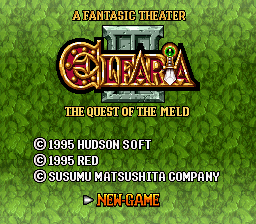
Elfaria was one of the early games I played on this blog. It was an innovative game, using an autobattle system with some elements of a strategy game, and an interesting “meld” system that allowed you to customize your characters. My final review was somewhat negative — the storyline was interesting and I do commend them for trying something new, but in the end I found the game rather tedious and repetitive, and the lack of control over the battle system became more frustrating as I played the game more.
2 years later, the same development team released Elfaria II. The story is a sequel to the first one, taking place 100 years later, but involving many of the same ideas (including time travel). The gameplay is more like a traditional RPG; they kept the auto battle system but you have more control over the characters this time.
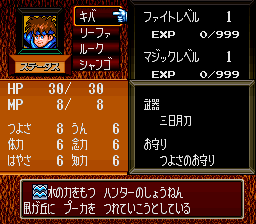
The “meld” system is also back from last time although it works in a different (and IMO not as interesting) way. You have two ways to do it. The first is “Charge”, which uses up an item to increase either the stats of a weapon or unlock its abilities. This is the only way you can do anything but attack, by equipping a weapon or unlocking abilities. You can also charge with certain items to increase the max level of a weapon, up to a certain point.
Meld combines a weapon and an item to make a new weapon. The resulting weapon depends on the element of both items, as well as their relative strength.
There are several major problems with the system, though. The first is the severe inventory limit of 30 items, 2-4 of which will be taken up by key items. You get up to 3 items for winning a battle, and there are a lot of reasons to want to keep items around. You will be constantly managing inventory and throwing a lot of things away, which is really boring. I don’t remember ever playing an RPG and thinking it was fun to manage inventory, and especially in a game like this where they give you so many things you can do with the items it’s really unforgivable. Not only do you want to keep around HP/MP restoring items and meld/charge items, but also various elemental defense items and weapons. But you basically can’t keep anything.
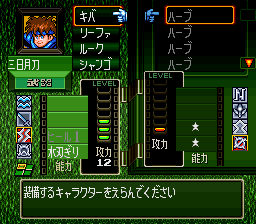
The second problem is that like Elfaria 1, you have very limited resources. MP, in particular, is so limited that you can often only fight a few battles before running out. You can’t use items in battle, and as mentioned before you basically can’t keep a stock of MP/HP restores because of the inventory limit.
You can tell the developers were aware of this because even small dungeons often have 2 or 3 restore and save points in them. But even with all these restore points the game is still hard to survive, and the end result is that the game involves an enormous amount of grinding, probably the most of any game I’ve played on this blog. The Japanese reviews I read of this game all mentioned this. Even the grinding is often difficult because your characters that were in the back row didn’t gain any fight levels, so they’ll be weak when you have to switch them to the front for elemental reasons.
It’s a shame because I think the system could have been better with just a few changes — a much bigger inventory, allowing characters to gain 1/2 XP for the row they’re not in, and giving characters a lot more MP to use their skills.
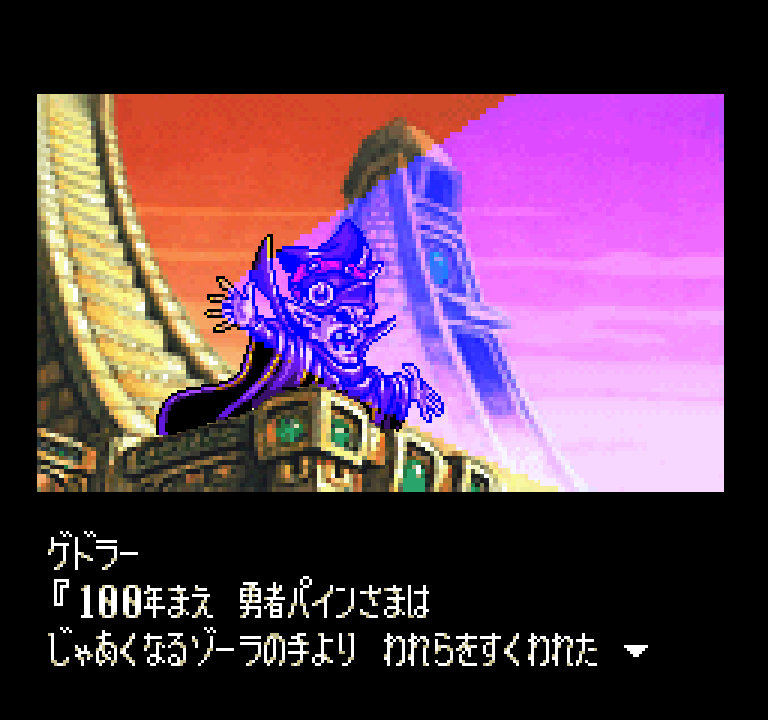
The story begins 100 years after the first game. The 16 heroes from that game are legendary now, and the world is controlled by a church that has banned melding and charging following the teachings of Pine, who apparently taught that they would ruin the world’s Ra energy. Pine later went to the Twisted Forest to stop its expansion — he never returned, but the Twisted Forest stopped expanding so apparently he saved the world.
The leader of the church is Gedora. Gedora is adamant in his belief that Melding and Charging are evil, and he has a vast army of inquisitors that imprison or kill any they find doing it. Leina is apparently the prophet of Pine. She prophecies that a hero has been reborn somewhere, but Gedora tells her to shut up — she’s only supposed to transmit the teachings of Pine, not prophecy.
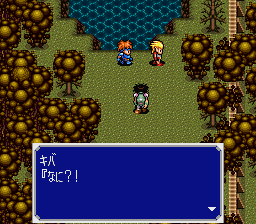
Our main character is Kiba, who is the son of a researcher Beta. Years ago, Beta took Kiba to the Elven Forest apparently to atone for something he had done, but now he’s been gone for a while. He has a companion Shango, a strange monster that can’t talk. They’re hunters, looking for monsters to kill. An elf named Keel shows up, saying that he is going to make Elfaria just for elves, and that he knows where Kiba’s father is. Another elf named Leefa shows up as well and joins Kiba along with her companion, a little Grif (the small bubble things from the first game). These are your four party members for the whole game. Leefa wants to stop Keel from his ambitions — Keel tried to resurrect and combine himself with an elf named Elzard, but he was rejected.
Now the gameplay finally starts as we head south to help out a resistance movement against Gedora. It turns out meanwhile that Leena and another priest Ramon are working against Gedora.
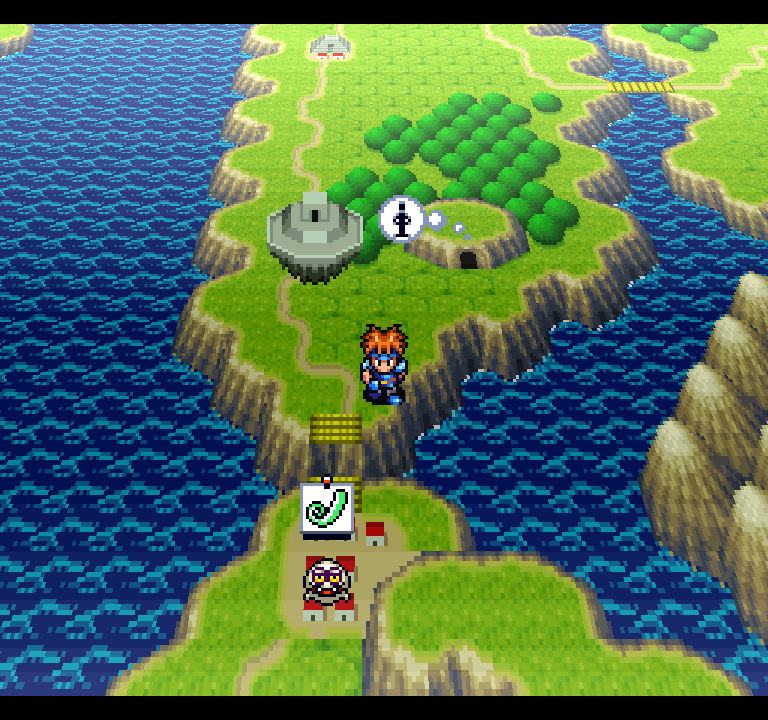
Each area on the map shows the element of the monsters in it — you want to do the formation that is best against that element so you get an advantage in battle, and also if possible equip defensive rings that help protect against it.
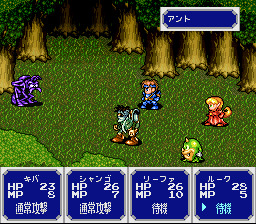
I already mentioned all the issues with the system above, so I’ll just continue with the story highlights. In the Wind Hill we meet Dr. Hermes who recommends that we find someone to teach us melding in order to oppose Gedora — Ramon the priest doesn’t like this idea but Kiba agrees. Back at Zaza town (the starting town), melders are being put to death. Another enemy Dr Daros is there overseeing it, and Kiba learns that his father sold his research to Gedora which is why he felt he had to atone. Apparently his work sunk an entire town into the water.
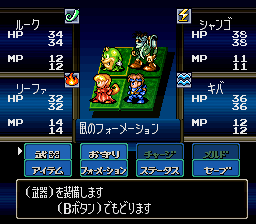
Dr Daros is turning people into monsters; it seems that Gedora is having him research that in order to control all of Elfaria. But Keel is opposing him, and Kiba learns that his father is apparently helping Keel. Luke, our little green blobby guy, has a gem that keeps us in touch with Eruru — she’s a mysterious figure that was also inspiring Pine in the first game, and apparently we are just continuing Pine’s work that is not yet finished.
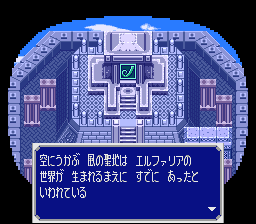
One of the things we do throughout the game is find colored gems, which are then put into these temple altars to get the elemental symbols. This clears the evil monsters from the area. It usually also involves beating one of Gedora’s elemental priests (in this case, the wind one).
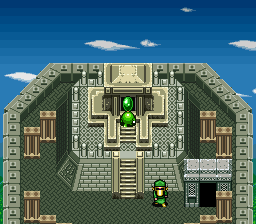
I’ll try to hit the highlights of the story from here on out since giving it in detail would be too tedious of a post — the story actually is not that bad and it’s a shame it’s not coupled with a better game. What we have at this point are several factions: Keel is working with Beta (Kiba’s father) against Gedora. Ramon and Leena are together against Gedora as well. Gedora himself is trying to make a powerful Dark Monster with the help of Dr. Daros, although he also seems to distrust Daros. The player characters are mostly working with the resistance while also looking for Kiba’s father.
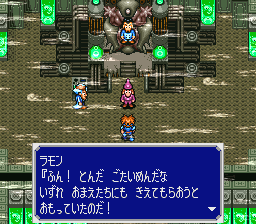
Eventually we reach a research lab. Shango mysteriously transforms into a different monster that can actually talk — in a later town it’s revealed that he was originally human but was turned into a monster by the experiments. We find Kiba’s father but Daros has turned him into a monster; he dies, but tells us to go learn Melding. This is done from the Merudon in the Twisted Forest, but after we learn the Melding, Gedora’s troops show up and massacre all the Merudon.
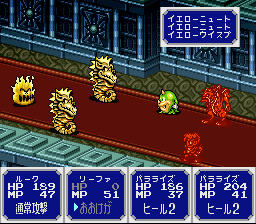
Leena eventually leaves Ramon’s side and joins us, because her prophetic voice has told her to follow us. Meanwhile Gedora has imprisoned Daros for betraying him — Gedora wonders why Elzard’s spirit seems to be spurring the heroes on to fight him. Elzard turned himself into a monster to defeat all the humans, so why would he be against Gedora for using monsters? Daros thinks there’s more to it than that.
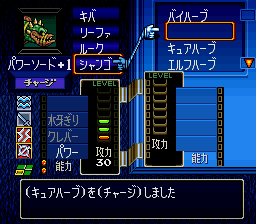
To get the Water Symbol we need the blue gem, but it was lost in the sinking of Hambu town (due to Kiba’s father), so we have to go back in time. Time travel was in the first game as well. We succeed, but Leena is lost in the travel and ends up in Elzard’s time, where he falls in love with her. Meanwhile Dr. Daros turns Gedora into the strongest dark monster — Gedora then tries to kill Daros but Keel saves him. Keel wants to be changed into the strongest Light Monster. Ramon tries to stop it; he kills Daros but not before Daros turns Keel into the monster.
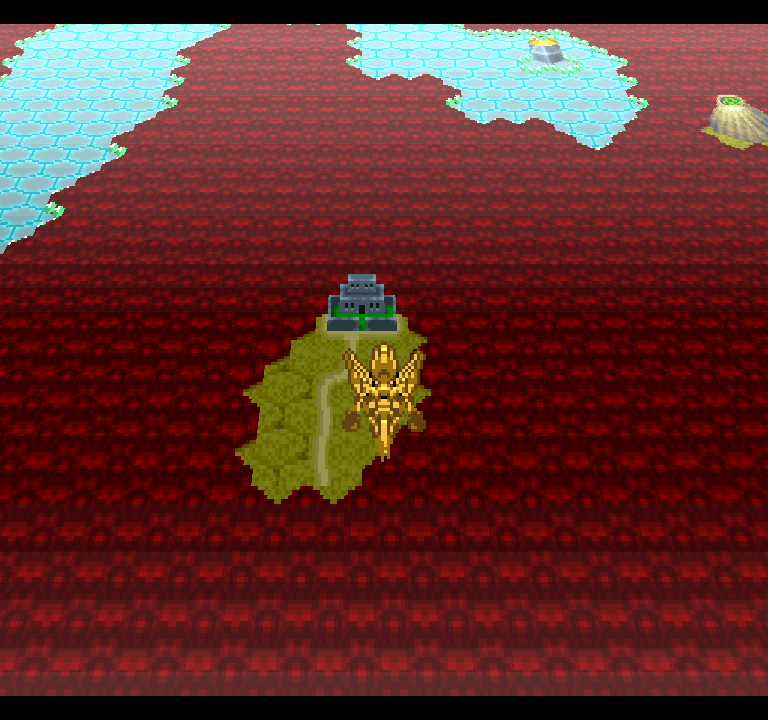
We manage to find and defeat Gedora. Ramon tries to take his place as high priest, but Keel shows up — he needs to change Ramon into a light monster so that he can combine with the monster and become the strongest Light Monster, resurrecting Elzard. In the past, Leena has become Elzard’s empress.
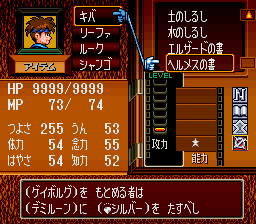
At this point I hit a very difficult boss fight. I consulted Richie’s walkthrough on GameFAQs. He rarely recommends specific levels unless it’s absolutely necessary — he was recommending level 38, and I was at level 26. That was enough for me, so I looked up cheat codes. I try to use the least invasive cheat code possible, but the only one I could find was setting Kiba’s stats to 9999 and 255, so that’s what I did (including current HP, which means he can’t die). Grinding up to level 38 would have taken a really long time.
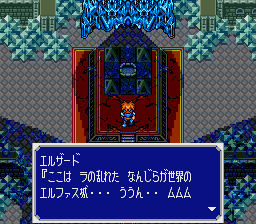
Elzard is in the original town, but when we defeat him, a shadow Elzard appears and destroys the world. We are sent back in time to when Elzard first became a monster. But Eruru says we can’t just kill Elzard here because that will mess with the timeline and completely ruin everything. Instead, we have to go to Elfis Castle and find the Ra Water. It also turns out that this mysterious force impelling us on the quest is Pine himself, who is using the last of his power to guide us to where he is. (My notes here aren’t good so I don’t remember why the Ra Water is necessary)
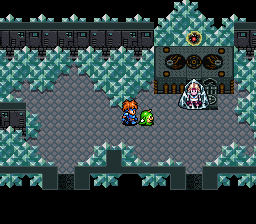
Elzard has gone to the Crystal Forest, and we follow him there. Pine dies, but gives us the World Egg to resurrect the world after Elzard destroys it. Even though we manage to defeat Elzard (the final boss), the world is still being destroyed — but even Elzard says he wants the world to be reborn, since he loved a human (Leena).
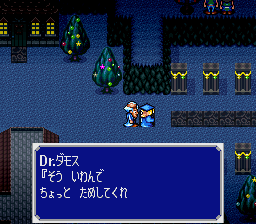
The party puts their hopes into restoring the world via the World Egg. The final scene shows a festival in Zaza (the starting town). All the characters are there, including the villains, with slightly modified names, and everything seems to be much more peaceful and stable.
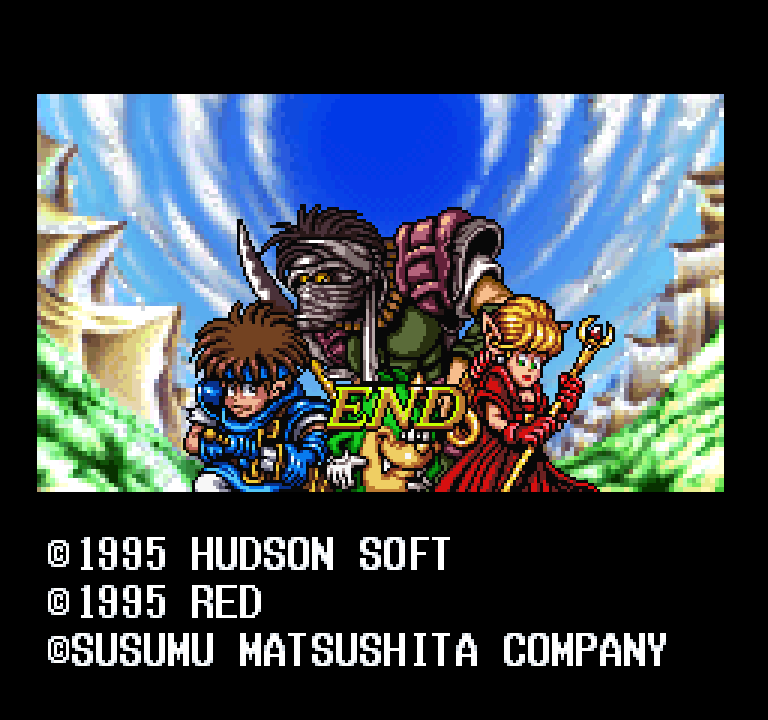
So that’s Elfaria II. It’s similar to Elfaria I in that the story is much better than the gameplay, but in E2’s case the gameplay is a total disaster. E1 is a much better game, and I would not recommend this game unless you really don’t mind grinding levels.